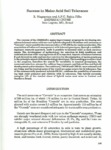Use este identificador para citar ou linkar para este item:
http://www.alice.cnptia.embrapa.br/alice/handle/doc/477315Registro completo de metadados
| Campo DC | Valor | Idioma |
|---|---|---|
| dc.contributor.author | MAGNAVACA, R. | pt_BR |
| dc.contributor.author | BAHIA FILHO, A. F. C. | pt_BR |
| dc.date.accessioned | 2011-04-10T11:11:11Z | pt_BR |
| dc.date.accessioned | 2011-04-10T11:11:11Z | pt_BR |
| dc.date.available | 2011-04-10T11:11:11Z | pt_BR |
| dc.date.available | 2011-04-10T11:11:11Z | pt_BR |
| dc.date.created | 1997-11-18 | pt_BR |
| dc.date.issued | 1993 | pt_BR |
| dc.identifier.citation | In: WORKSHOP ON ADAPTATION OF PLANTS TO SOIL STRESSES, 1993, Lincoln. Proceedings... [Lincoln]: USAID: INTSORMIL: University of Nebraska, [1993]. p. 209-220. | pt_BR |
| dc.identifier.uri | http://www.alice.cnptia.embrapa.br/alice/handle/doc/477315 | pt_BR |
| dc.description | The sucess of the EMBRAPA maize improvement program in developing aluminum tolerant maize cultivars and hybrids adapted to Brazilian acid savannas or "Cerrado", made possible the incorporation of 727,500 ha for maize production. The association of better soil management with tolerant genotypes, through a multidisciplinary research approach, made it possible to increase yield in such environments. The development of methodology for selection in field conditions and nutrient solution with varying levels of Al is reported. Aspects of balance between P and Al levels in soils and nutrient solution for discrimination of maize genotypes is the principles aspect of the methodology developed. The breeding procedures used in the program, describes the search for variability in tropical germplasm, the recurrent selection scheme for cultivar improvement, and inbred line and hybrid developemnt and evaluation. Two cultivars, CMS 36 and CMS 30, were released and are being used in tropical areas of the world as a gene source for Al tolerance. One of the commercially produced hybrids BR 201, confirms the possibility of associating high yield potential and stability with Al tolerance. This hybrid currently occuples 14% of the market share of hybrid maize seed sales in central and Southern Brasil. | pt_BR |
| dc.language.iso | eng | eng |
| dc.relation.ispartofseries | (INTSORMIL Publication, 94-2). | pt_BR |
| dc.rights | openAccess | eng |
| dc.subject | Tolerancia | pt_BR |
| dc.subject | Maize | pt_BR |
| dc.subject | Aluminium | pt_BR |
| dc.subject | Tolerance | pt_BR |
| dc.subject | Acid soil | pt_BR |
| dc.title | Success in maize acid soil tolerance. | pt_BR |
| dc.type | Artigo em anais e proceedings | pt_BR |
| dc.date.updated | 2018-07-13T11:11:11Z | pt_BR |
| dc.subject.thesagro | Alumínio | pt_BR |
| dc.subject.thesagro | Melhoramento | pt_BR |
| dc.subject.thesagro | Milho | pt_BR |
| dc.subject.thesagro | Solo Ácido | pt_BR |
| dc.subject.thesagro | Zea Mays | pt_BR |
| dc.subject.nalthesaurus | breeding | pt_BR |
| riaa.ainfo.id | 477315 | pt_BR |
| riaa.ainfo.lastupdate | 2018-07-13 -03:00:00 | pt_BR |
| dc.contributor.institution | EMBRAPA-CNPMS. | pt_BR |
| Aparece nas coleções: | Artigo em anais de congresso (CNPMS)  | |
Arquivos associados a este item:
| Arquivo | Descrição | Tamanho | Formato | |
|---|---|---|---|---|
| Successmaize.pdf | 7,65 MB | Adobe PDF |  Visualizar/Abrir |









